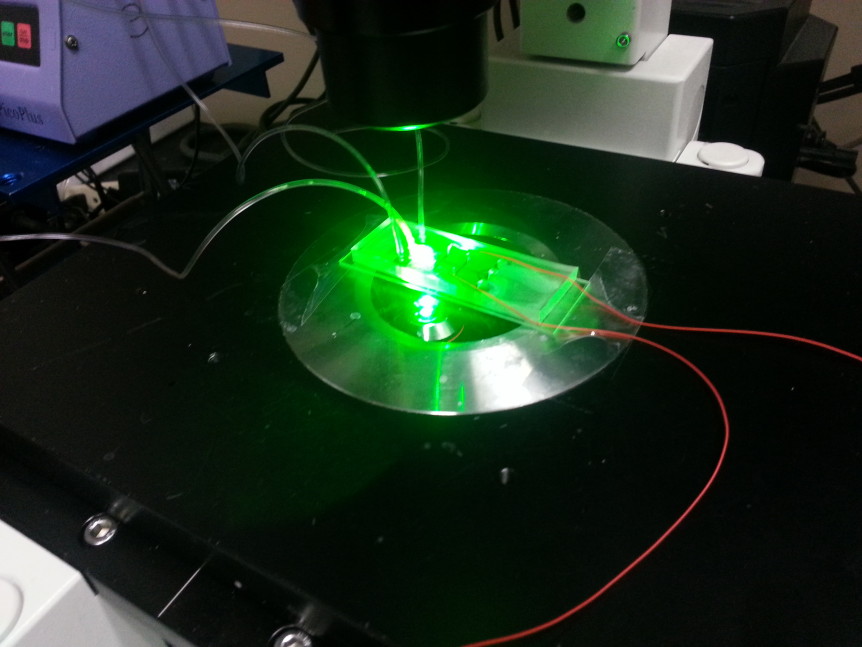This past week, I finally finished creating the designs for the electrodes. Since my device relies on the phenomenon of dielectrophoresis (DEP), I designed electrodes that would produce a strong non-uniform electric field. Two designs were created to observe which would produce a better result. Each of the designs had different shaped electrode fingers, one was rectangular and the other was trapezoidal, and both were created using SolidWorks. They were ordered this past Wednesday, so they should be arriving in a few days! As soon as the mask arrives, I can begin fabricating and testing, and I’m excited to see how the results turn out!
I also got to check out how DEP works in action! Maryam, a graduate student I’m working with, brought a device to conduct a sample DEP experiment in order to observe how our device should work. A solution containing micro-polystyrene beads were used to observe how they flow through a non-uniform electric field. At first, we were able to see some beads separating; however after a few minutes the fluid randomly stopped flowing through the channels. At first, we thought there may have been an air bubble; however upon closer examination we noticed this black gunk sticking across the channels. It was unknown what the gunk was, though it was assumed to be due to some sugar solution in the bead suspension. The suspension of the beads used was also pretty old, so the gunk may be due to mold. Despite this interference, we were able to view DEP working for a few minutes and we are planning on doing another test run with a new bead suspension soon!
By Lydia Nezhat Ameri, CD Fluidics

